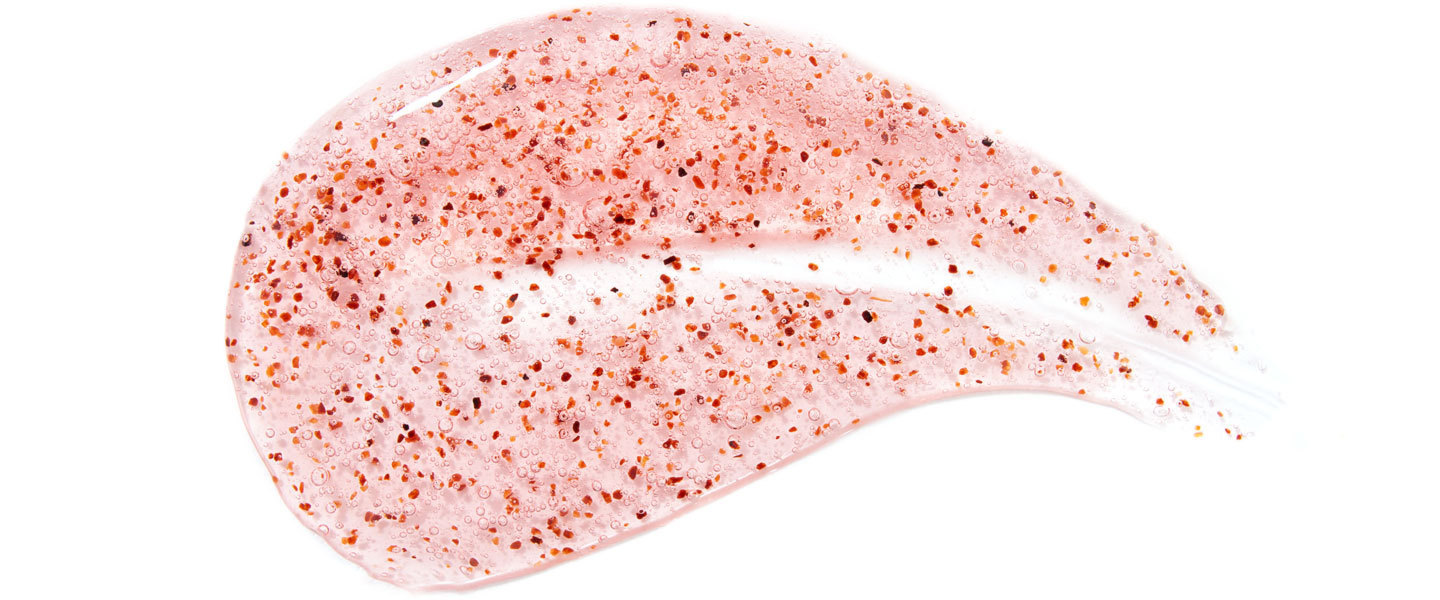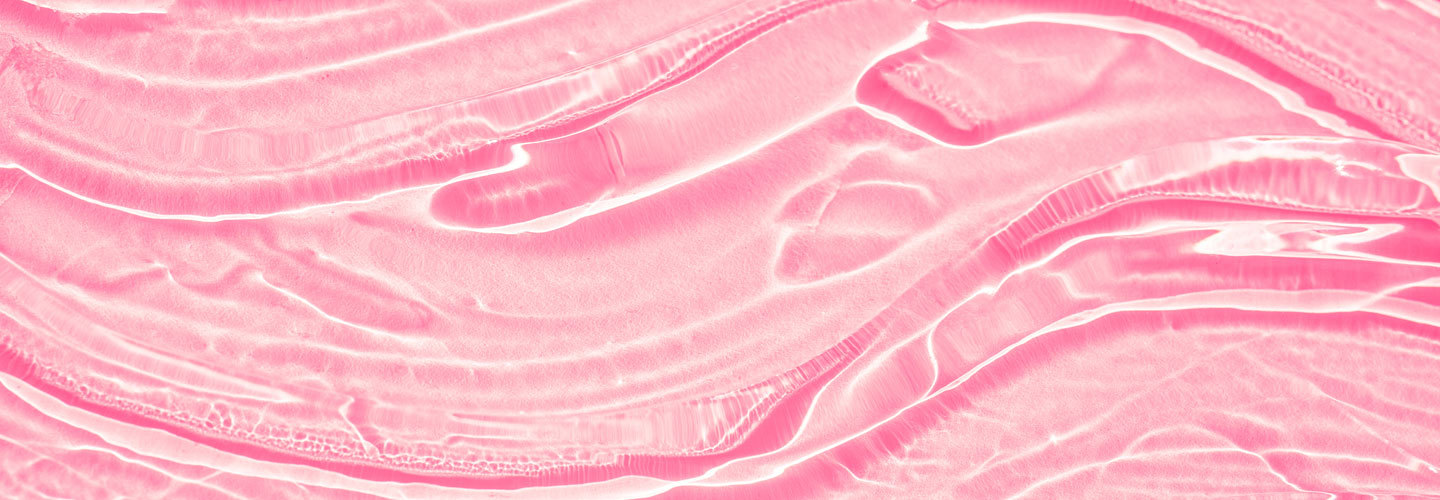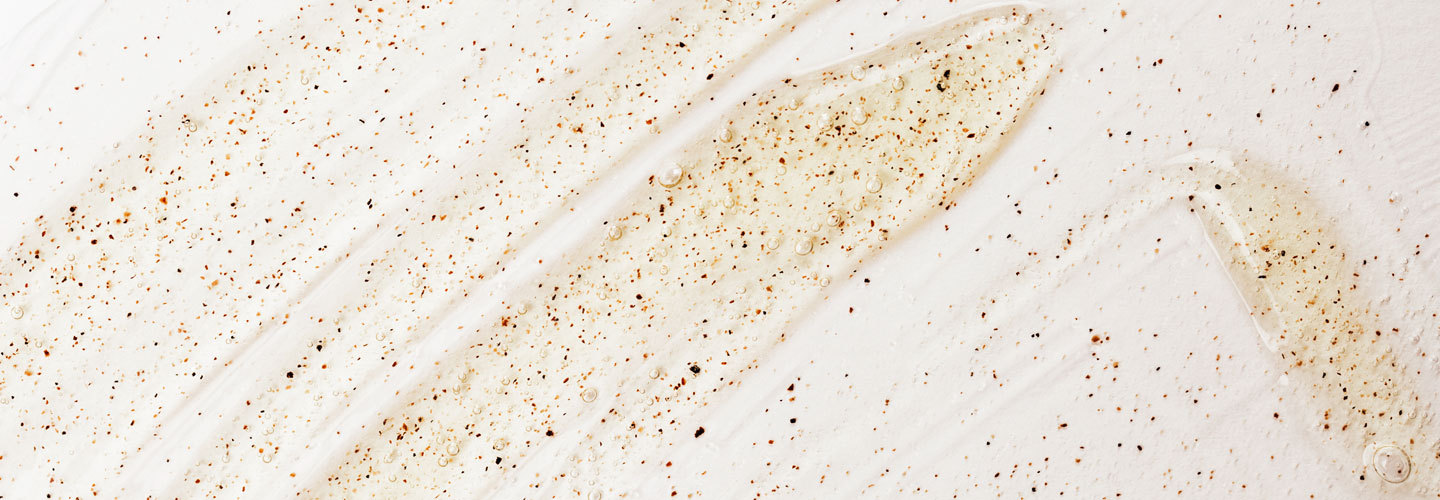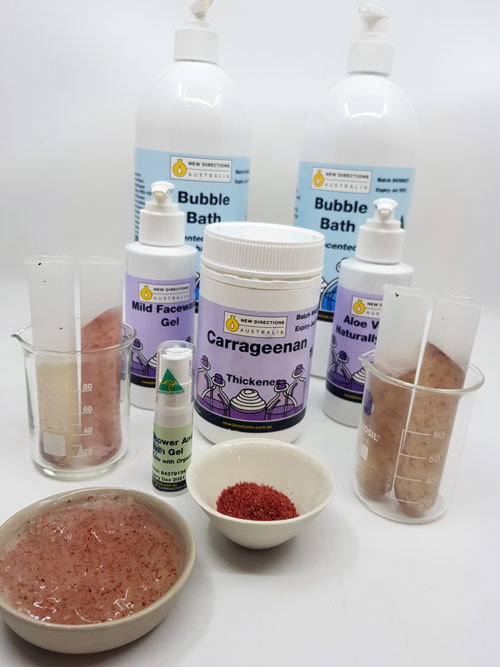 News
Articles & Recipes
Articles
The Science of Suspension, Transforming A Gel C...
News
Articles & Recipes
Articles
The Science of Suspension, Transforming A Gel C...
The Science of Suspension, Transforming A Gel Cleanser Into An Exfoliating Wash

Thickening Vs Suspending.
The key to a good exfoliating gel is to choose the right suspending agent, something that not only thickens but that has muscle power! It is possible to create a cleansing gel that is very thick but has no suspending power or is relatively thin but has an extraordinary capacity for suspending particulates. This gives us a clue that there must be more going on inside the product than we first expect.
Surfactants, especially sulphates, create micelle structures in water that can be so thick that you can stand a spoon up in them! Other, milder surfactant blends tend to generate thinner bases that require the addition of a thickener such as PEG 120 Methyl Glucose Dioleate to achieve a decent viscosity. While both situations can achieve a very viscous, crystal clear end-product (gelled surfactant cleanser), neither have what we call 'suspending' power so any exfoliant particles you add will drop out of solution. This is because the viscosity is boosted by the size and shape of the individual surfactant micelles in the product and while these can get quite large and bulky, they repel other micelles rather than bind with them leaving little gaps for exfoliant particulates to squeeze through.
Exfoliant particles need a continuous network or 'fishing net' structure to hold them and that's where natural gums come in.
Gums are often referred to as 'thickeners' but in this case imagining them as simply that is not entirely helpful. Gums don't just swell up in water and create a thickened gel, they cross-link or build attractions between each gum strand and these links and bonds create a three dimensional mesh or trap that can be strong enough to hold exfoliant particles up so they resist the pull of gravity!
While all gums create some form of mesh structure, they differ in their strength and tolerance of surfactant solutions. Carbomer is a family of synthetic thickeners often used in cosmetics to create crystal clear, short flow gums but put these with soapy things and they quickly turn to water. On the other hand, Carrageenan and many other natural gums are both compatible with surfactants and able to form strong inter-gum bonds. Our thickener master data table gives some insight into the suspending power of our range of thickeners.

Using this knowledge to turn a gel cleanser into an exfoliant.
To demonstrate this phenomenon, we took regular carrageenan gum and used it to create a gel which we also preserved to keep it fresh. This gel was used to add some muscle or suspending power to some of our surfactant-based cleanser products as per the breakdown below. As the blends we created ended up being a little too viscous we then watered them down a little to balance everything out and give us crystal clear, gelled cleansers with suspending power.
Step 1: Create a stock solution of suspending/ thickening agent:
| Carrageenan | 1.5% |
| Water | 97.5% |
| Plantaserv E preservative | 1% |
| TOTAL | 100% |
Step 2: Create the product blends:
| Stock Solution from step 1. | 50% |
| Water | 19% |
| Cleansing Product of choice | 30% |
| Exfoliant Particles | 1% |
| TOTAL | 100% |
Blending the stock solution gel into the New Directions product base generated quite a few bubbles, especially as we were creating the products with a spatula rather than a laboratory mixer. Gentle heating followed by standing for 24 hours removed the excess bubbles and revealed the true nature of the finished blends.
Once the blends were ready, we took a small amount of each and ran it through a centrifuge test. Centrifugal forces are an imperfect but reasonable substitute for gravitational pull and can enable the evaluation of suspending power in a very short time frame. Based on our stability testing data, a gel that can sustain forces of 1500 RPM for 3 minutes has adequate suspension power. Anything above that is exceptional.

Step 3: Testing the suspension power of the blends using a centrifuge.
| Base Used in Formula | Low Speed Centrifuge | Medium Speed Centrifuge | High Speed Centrifuge |
| Bubble Bath Unscented | Pass | Starting to fail | Fail |
| Mild Facewash Gel | Pass | Pass | Starting to fail |
| Bubble Bath Unscented, Paraben and Sulfate Free | Pass | Pass | Pass |
| Shower and Bath Gel Made with Organics | Pass | Pass | Pass, Still perfect |
Conclusion.
This experiment has proven it is possible to turn the above New Directions base cleansers into exfoliating cleansers by adding a thickened carrageenan gel. While we created a super-strength Carrageenan gel using the powder, water and a preservative in this case, for clients wanting a simpler procedure, the Aloe Vera Gel Naturally Derived could be used as a gel substitute albeit a slightly weaker option due to the lower level of carrageenan in that gum. For clients wanting to try this experiment at home but whom don't have a centrifuge, gravity will do its thing over time (typically 1-2 weeks) and it can be encouraged along by taking your samples out for a drive or ride along a slightly bumpy road.

Amanda Foxon-Hill
